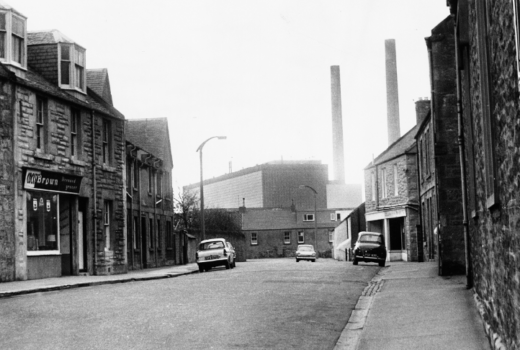Parish Representative:
Gordon Jamieson
Introduction
Divided to the south from its original ‘parent’ parish of Tranent by a stretch of the A198 road and the main Edinburgh/London railway line, the burgh of Cockenzie and Port Seton is sandwiched between Prestonpans to the west, Longniddry to the east, and the Firth of Forth to the north. By 2000, the visual dominance of the mining works associated with the Blindwells opencast (south of the railway in Tranent) was diminishing, as the landscape there was gradually being reinstated. In the 1970s, housing expanded eastwards, and from the 1990s, housing development was moving into the Seton lands to the south of the burgh. There was concern that the coastal settlements would soon merge as one continuous ribbon of development, and it was becoming increasingly difficult for places like Cockenzie and Port Seton to retain their individuality; even the power station that bears the burgh’s name is actually located in Prestonpans parish.
In 1945, the burgh of Cockenzie and Port Seton had a population of around 2800. For some the victory was a time of great rejoicing, for others, a solemn occasion knowing that loved ones would never return. In late 1944 the Home Guard was stood down. In 1945 the Burgh Auxiliary Fire Service, which was operating out of Wiles’ car showroom in Seton Place, manned by Douglas Stewart, Tom Glasgow, William Murdoch, Robert Donaldson and Tom Flockhart, was no longer required and disbanded.
Thousands of East Lothian men and women served in the armed forces as well as the auxiliary services and land army. Cockenzie and Port Seton residents were at the forefront providing personnel. The miners and agricultural workers had toiled throughout the six years of conflict and the local pits and surrounding farms were assisted by prisoner-of-war labour, helping provide much needed fuel and food.
The women engaged in war work were gradually returning to their peacetime occupations, the civil defence personnel were stood down. Men were returning home in brand new ‘de-mob’ suits, eager to celebrate their return to ‘civvie’ life. It was a boom time as men had their gratuities to spend. Parties and dances were the order of the day in spite of rationing. The small businesses were restarting around the harbours, as new orders were placed. Weatherhead the boat builders, started to repair the fishing fleet and build replacement vessels; six boats were ordered for the Isle of Man fleet. The burgh looked forward to the rebuilding and reconstruction in the new peacetime.
